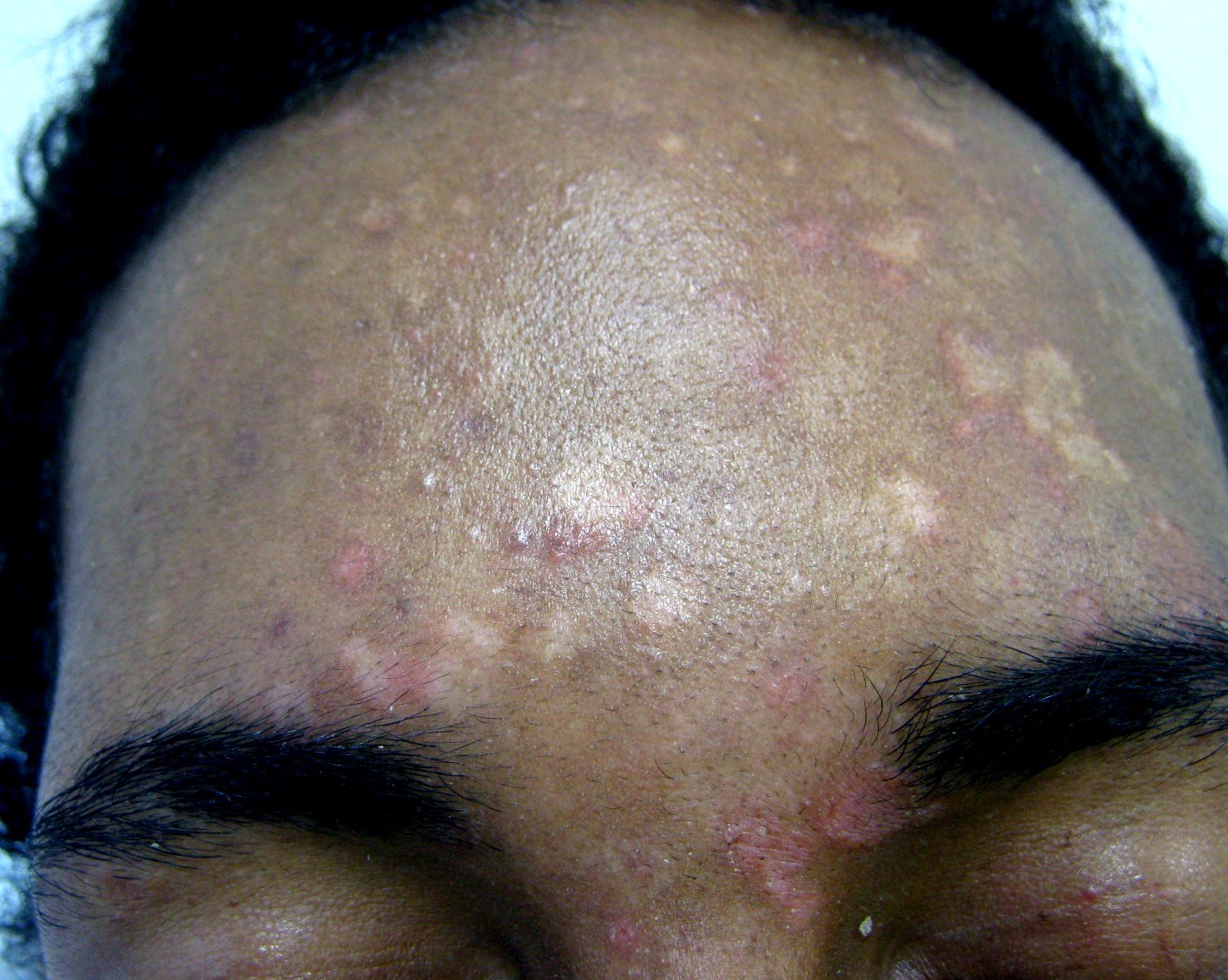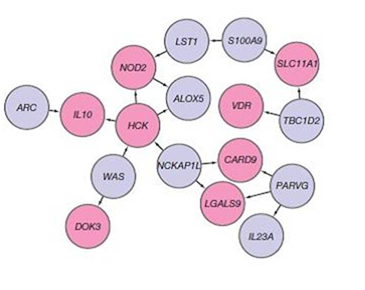|
Malassezia Dermatitis
''Malassezia'' is a genus of fungi (specifically, a yeast belonging to the division Basidiomycota). Some species of ''Malassezia'' are found on the skin of animals, including humans. Because malassezia requires fat to grow, it is most common in areas with many sebaceous glandson the scalp, face, and upper part of the body. Role in human diseases ''Malassezia'' infections of human skin can cause or aggravate a variety of conditions, including dandruff, seborrheic dermatitis, and acne. Dermatitis and dandruff When ''Malassezia'' grows too rapidly, the natural renewal of cells is disturbed, and dandruff can appear with itching (a similar process may also occur with other fungi or bacteria). Identification of ''Malassezia'' on skin has been aided by the application of molecular or DNA-based techniques. These investigations show that ''M. globosa'' is the species that causes most skin disease in humans, and that it is the most common cause of dandruff and seborrhoeic derm ... [...More Info...] [...Related Items...] OR: [Wikipedia] [Google] [Baidu] |
Tinea Versicolor
Tinea versicolor (also pityriasis versicolor) is a condition characterized by a skin eruption on the trunk and proximal extremities. The majority of tinea versicolor is caused by the fungus '' Malassezia globosa'', although '' Malassezia furfur'' is responsible for a small number of cases. These yeasts are normally found on the human skin and become troublesome only under certain conditions, such as a warm and humid environment, although the exact conditions that cause initiation of the disease process are poorly understood. The condition pityriasis versicolor was first identified in 1846. Versicolor comes from the Latin ' 'to turn' + ''color''. It is commonly referred to as Peter Elam's disease in many parts of South Asia. Signs and symptoms The signs of this condition include: * Occasional fine scaling of the skin producing a very superficial ash-like scale * Pale, dark tan, or pink in color, with a reddish undertone that can darken when the patient is overheated, such as ... [...More Info...] [...Related Items...] OR: [Wikipedia] [Google] [Baidu] |
Louis-Charles Malassez
Louis-Charles Malassez (21 September 1842 – 22 December 1909) was a French anatomist and histologist born in Nevers, department of Nièvre. He studied medicine in Paris, where he worked as an ''interne'' from 1867. He served with the 5th Ambulance Corps during the Franco-Prussian War, afterwards returning to Paris, where he worked with distinguished physicians that included Claude Bernard, Jean-Martin Charcot and Pierre Potain. In 1875, he attained the chair of anatomy at Collège de France, and in 1894 he became a member of the ''Académie de Médecine''. He conducted histological research of the blood, and is credited for design of the hemocytometer, a device used to quantitatively measure blood cells. In the field of dentistry, he described residual cells of the epithelial root sheath in the periodontal ligament. These remaining cells are referred to as epithelial cell rests of Malassez (ERM). A genus of fungi called '' Malassezia'' bears his name. The species in the g ... [...More Info...] [...Related Items...] OR: [Wikipedia] [Google] [Baidu] |
Microbiological Culture
A microbiological culture, or microbial culture, is a method of multiplying microorganism, microbial organisms by letting them reproduce in predetermined culture medium under controlled laboratory conditions. Microbial cultures are foundational and basic diagnostic methods used as research tools in molecular biology. The term ''culture'' can also refer to the microorganisms being grown. Microbial cultures are used to determine the type of organism, its abundance in the sample being tested, or both. It is one of the primary diagnostic methods of microbiology and used as a tool to determine the cause of infection, infectious disease by letting the agent multiply in a predetermined medium. For example, a throat culture is taken by scraping the lining of tissue in the back of the throat and blotting the sample into a medium to be able to screen for harmful microorganisms, such as ''Streptococcus pyogenes'', the causative agent of strep throat. Furthermore, the term culture is more ge ... [...More Info...] [...Related Items...] OR: [Wikipedia] [Google] [Baidu] |
Growth Media
A growth medium or culture medium is a solid, liquid, or semi-solid designed to support the growth of a population of microorganisms or cells via the process of cell proliferation or small plants like the moss ''Physcomitrella patens''. Different types of media are used for growing different types of cells. The two major types of growth media are those used for cell culture, which use specific cell types derived from plants or animals, and those used for microbiological culture, which are used for growing microorganisms such as bacteria or fungi. The most common growth media for microorganisms are nutrient broths and agar plates; specialized media are sometimes required for microorganism and cell culture growth. Some organisms, termed fastidious organisms, require specialized environments due to complex nutritional requirements. Viruses, for example, are obligate intracellular parasites and require a growth medium containing living cells. Types The most common growth media ... [...More Info...] [...Related Items...] OR: [Wikipedia] [Google] [Baidu] |
Class (biology)
In biological classification, class () is a taxonomic rank, as well as a taxonomic unit, a taxon, in that rank. It is a group of related taxonomic orders. Other well-known ranks in descending order of size are domain, kingdom, phylum, order, family, genus, and species, with class ranking between phylum and order. History The class as a distinct rank of biological classification having its own distinctive name – and not just called a ''top-level genus'' ''(genus summum)'' – was first introduced by French botanist Joseph Pitton de Tournefort in the classification of plants that appeared in his '' Eléments de botanique'' of 1694. Insofar as a general definition of a class is available, it has historically been conceived as embracing taxa that combine a distinct ''grade'' of organization—i.e. a 'level of complexity', measured in terms of how differentiated their organ systems are into distinct regions or sub-organs—with a distinct ''type'' of construction, whic ... [...More Info...] [...Related Items...] OR: [Wikipedia] [Google] [Baidu] |
Order (biology)
Order () is one of the eight major hierarchical taxonomic ranks in Linnaean taxonomy. It is classified between family and class. In biological classification, the order is a taxonomic rank used in the classification of organisms and recognized by the nomenclature codes. An immediately higher rank, superorder, is sometimes added directly above order, with suborder directly beneath order. An order can also be defined as a group of related families. What does and does not belong to each order is determined by a taxonomist, as is whether a particular order should be recognized at all. Often there is no exact agreement, with different taxonomists each taking a different position. There are no hard rules that a taxonomist needs to follow in describing or recognizing an order. Some taxa are accepted almost universally, while others are recognized only rarely. The name of an order is usually written with a capital letter. For some groups of organisms, their orders may follow consist ... [...More Info...] [...Related Items...] OR: [Wikipedia] [Google] [Baidu] |
Family (biology)
Family (, : ) is one of the eight major hierarchical taxonomic ranks in Linnaean taxonomy. It is classified between order and genus. A family may be divided into subfamilies, which are intermediate ranks between the ranks of family and genus. The official family names are Latin in origin; however, popular names are often used: for example, walnut trees and hickory trees belong to the family Juglandaceae, but that family is commonly referred to as the "walnut family". The delineation of what constitutes a family—or whether a described family should be acknowledged—is established and decided upon by active taxonomists. There are not strict regulations for outlining or acknowledging a family, yet in the realm of plants, these classifications often rely on both the vegetative and reproductive characteristics of plant species. Taxonomists frequently hold varying perspectives on these descriptions, leading to a lack of widespread consensus within the scientific community ... [...More Info...] [...Related Items...] OR: [Wikipedia] [Google] [Baidu] |
Malassezia Folliculitis
Malassezia folliculitis or pityrosporum folliculitis, is a skin condition caused by infection by ''Malassezia'' (formerly ''Pityrosporum'') yeast. The skin of the upper trunk area including the back, chest, arms and sometimes the neck is often affected and this condition is often seen in young to middle aged adults, although it has been known to occur in adults well into their sixties, and can also be found on the lower extremities as well. Its diagnosis is based on the pruritic (itchy) papulopustules found in a follicular pattern in these regions. Pustules are caused by an overgrowth of the yeast ''Malassezia furfur'' (formerly ''Pityrosporum ovale''), which plugs the follicles. This yeast is lipophilic, requiring fatty acids that are present in oily skin to proliferate. It has been shown that ''Malassezia'' yeast grows by consuming fatty acids with carbon chain lengths C11 to C24. Malassezia is part of the normal skin flora, but overgrows in certain conditions. Overgrowth is as ... [...More Info...] [...Related Items...] OR: [Wikipedia] [Google] [Baidu] |
Pityrosporum Folliculitis 2
''Malassezia'' is a genus of fungi (specifically, a yeast belonging to the division Basidiomycota). Some species of ''Malassezia'' are found on the skin of animals, including humans. Because malassezia requires fat to grow, it is most common in areas with many sebaceous glandson the scalp, face, and upper part of the body. Role in human diseases ''Malassezia'' infections of human skin can cause or aggravate a variety of conditions, including dandruff, seborrheic dermatitis, and acne. Dermatitis and dandruff When ''Malassezia'' grows too rapidly, the natural renewal of cells is disturbed, and dandruff can appear with itching (a similar process may also occur with other fungi or bacteria). Identification of ''Malassezia'' on skin has been aided by the application of molecular or DNA-based techniques. These investigations show that ''M. globosa'' is the species that causes most skin disease in humans, and that it is the most common cause of dandruff and seborrhoeic derm ... [...More Info...] [...Related Items...] OR: [Wikipedia] [Google] [Baidu] |
CARD9
Caspase recruitment domain-containing protein 9 is an adaptor protein of the CARD-CC protein family, which in humans is encoded by the ''CARD9'' gene. It mediates signals from pattern recognition receptors to activate pro-inflammatory and anti-inflammatory cytokines, regulating inflammation. Homozygous mutations in CARD9 are associated with defective innate immunity against yeasts, like Candida and dermatophytes. Function CARD9 is a member of the CARD protein family, which is defined by the presence of a characteristic caspase-associated recruitment domain (CARD). This protein was identified by its selective association with the CARD domain of BCL10, a positive regulator and NF-κB activation. It is thought to function as a molecular scaffold for the assembly of a BCL10 signaling complex that activates NF-κB. Several alternatively spliced transcript variants have been observed, but their full-length nature is not clearly defined. Clinical significance In 2006, it becam ... [...More Info...] [...Related Items...] OR: [Wikipedia] [Google] [Baidu] |
Inflammatory Bowel Disease
Inflammatory bowel disease (IBD) is a group of inflammatory conditions of the colon and small intestine, with Crohn's disease and ulcerative colitis (UC) being the principal types. Crohn's disease affects the small intestine and large intestine, as well as the mouth, esophagus, stomach and the anus, whereas UC primarily affects the colon and the rectum. Signs and symptoms In spite of Crohn's and UC being very different diseases, both may present with any of the following symptoms: abdominal pain, diarrhea, rectal bleeding, severe internal cramps/muscle spasms in the region of the pelvis and weight loss. Anemia is the most prevalent extraintestinal complication of inflammatory bowel disease (IBD). Associated complaints or diseases include arthritis, pyoderma gangrenosum, primary sclerosing cholangitis, and non-thyroidal illness syndrome (NTIS). Associations with deep vein thrombosis (DVT) and bronchiolitis obliterans organizing pneumonia (BOOP) have also been reported. ... [...More Info...] [...Related Items...] OR: [Wikipedia] [Google] [Baidu] |





